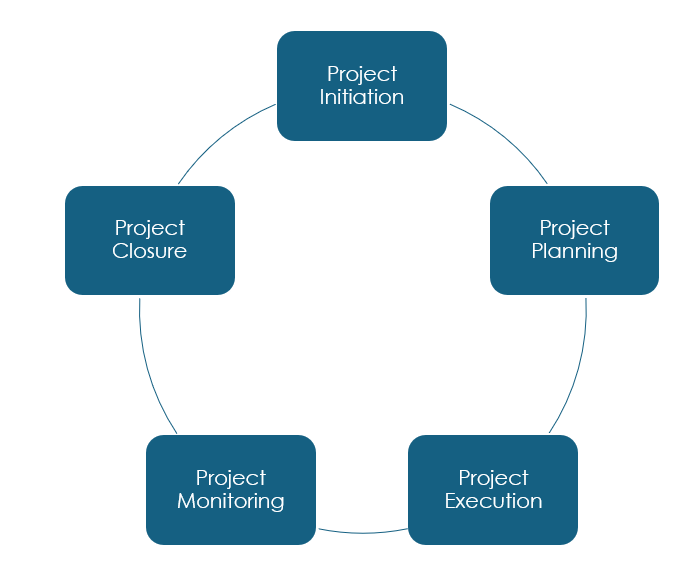Managing a project is no easy feat, no matter what the scale and scope are. From planning the minutia to handling the ever-changing demands of clients to shipping the deliverables on time, there’s a lot that can go wrong. When you divide the project into manageable stages, each with its own goals and deliverables, it’s easier to control the project and the quality of the output.
A project management life cycle consists of 5 distinct phases including initiation, planning, execution, monitoring, and closure that combine to turn a project into a success.
1. Project Initiation
During the initiation phase, project objectives, scope, and stakeholders are identified. This phase sets the foundation for the rest of the project and is critical to ensure that the project is aligned with the overall goals and objectives of the organization.

2. Project Planning
The planning phase involves developing a project management plan, defining project activities, estimating resources and time required, and creating a project schedule. This phase is critical to ensure that the project is properly scoped, resourced, and scheduled to meet the project objectives.
3. Project Execution
The execution phase involves the actual implementation of the project plan. This phase requires close coordination between the project team, contractors, and stakeholders to ensure that the project is progressing according to plan.

4. Project Monitoring
The monitoring phase involves tracking progress, identifying issues and risks, and making adjustments as necessary. This phase is critical to ensure that the project stays on track and that any issues or risks are identified and addressed in a timely manner.

5. Project Closure
Finally, the closure phase involves formally completing the project and handing it over to the client. This phase includes activities such as final testing, documentation, and project review.
Share to facebook, Instagram, twitter, whatsaap, linkedin etc

